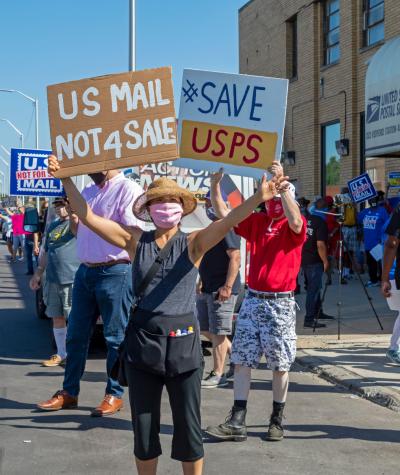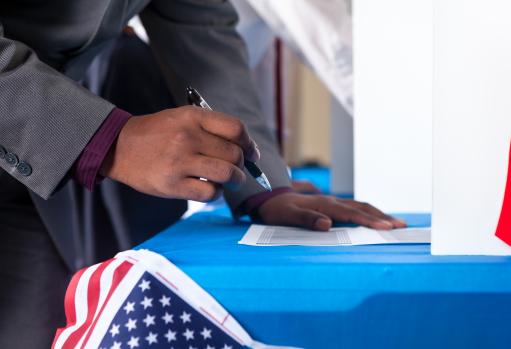Postal workers and voting rights advocates around the country have raised concerns this summer about changes to United States Postal Service (USPS) policies announced in August 2020 by Postmaster General Louis DeJoy. The changes included cutting overtime, reducing delivery trips, and limiting post office hours, which workers said were causing massive delivery delays.
This couldn’t come at a worse time. We should not have to choose between public health and a functioning democracy.
Even before the coronavirus pandemic forced states and localities to consider expanding remote voting options to protect public health starting in the spring of 2020, an increased percentage of Americans cast their votes by mail in each recent election. Nationally, there were 42.5 million votes cast by mail in 2018.
Now in 2020, in a presidential election year held during the emergency of a pandemic, that number is expected to surge. Overseas military personnel, voters with disabilities, and people seeking to avoid contracting COVID-19 are expected to vote absentee or vote by mail in high numbers.
The U.S. Senate Committee on Homeland Security and Governmental Affairs held a hearing on August 21, 2020. This was the first time that the public heard responses from DeJoy about the flood of concerns piling up in Senate offices about the handling of the Postal Service.
Following the announcement of the Senate hearing, Postmaster General DeJoy released a statement saying USPS will halt the harmful, cost-cutting initiatives until after the election, but despite this, he remains committed to his organizational moves that threaten to slow the Postal Service.
In his response to Sen. Kirsten Sinema in Friday's hearing, DeJoy noted that he will be sending a letter to every American about Postal Service processes. Is DeJoy coordinating or clearing it with the White House, U.S. Department of the Treasury, or anyone else in the Trump Administration?
DeJoy was a major political donor and fundraiser, giving more than $2 million to President Trump’s campaign and various Republican causes in the past few election cycles. In 2020 alone, he gave more than $360,000 to Trump Victory, a joint fundraising committee between the Trump campaign and the Republican Party.
Getting clearance from the Trump administration on changes that Trump could perceive as beneficial to his reelection could pose a conflict of interest.
Since USPS is likely to report a loss of $9 billion, it is vital that Congress enact reform legislation. Americans’ opinion of the U.S. Postal Service remains highly positive, according to the results of a new survey. The Pew Research Center released a poll on April 9, 2020, which showed that an overwhelming 91% of respondents have a favorable view of USPS, higher than any other federal agency.
The Postal Board of Governors recommended $25 billion in funding to ensure that the Postal Service can fund essential operations, but Congress has thus far failed to come to the rescue. Instead, austerity at the agency has threatened the ability of tens of millions of Americans to cast valid votes in the 2020 elections in the manner of their choice.
Here are a few outstanding concerns that Campaign Legal Center (CLC) will be pressing Congress to address, as their oversight of the Postal Service continues.
Sorting Machines
We remain concerned about the removal of sorting machines, which are essential for the Postal Service to handle a surge in mail voting – especially as the election approaches. Reports indicate DeJoy ordered USPS to remove nearly 700 mail sorting machines across the country. During the Senate hearing, DeJoy did not commit to replacing or returning those machines that have already been removed.
Drop Boxes
The U.S. Election Assistance Commission (EAC) recommends having one election mail drop box for every 15,000 to 20,000 voters. Many states do not have as many as the EAC recommends.
To ensure that delays in mail delivery do not inadvertently disenfranchise voters who plan to vote by mail, state and local election officials should do everything within their power to make secure and accessible drop boxes available to all voters.
First-Class Mail
USPS has long had a practice of treating all election mail – including ballots mailed to and by voters – as first-class mail for purposes of service and delivery. The Postal Service has informed some states that they may be required to pay the higher first-class rate to deliver ballots with the same speed as first-class mail, nearly tripling the cost for state and local election offices.
This would be unacceptable. Less than 90 days before a national election, maintaining the first-class mail designation for all election mail is essential to ensure that as many voters as possible can cast their votes by mail if they choose.

